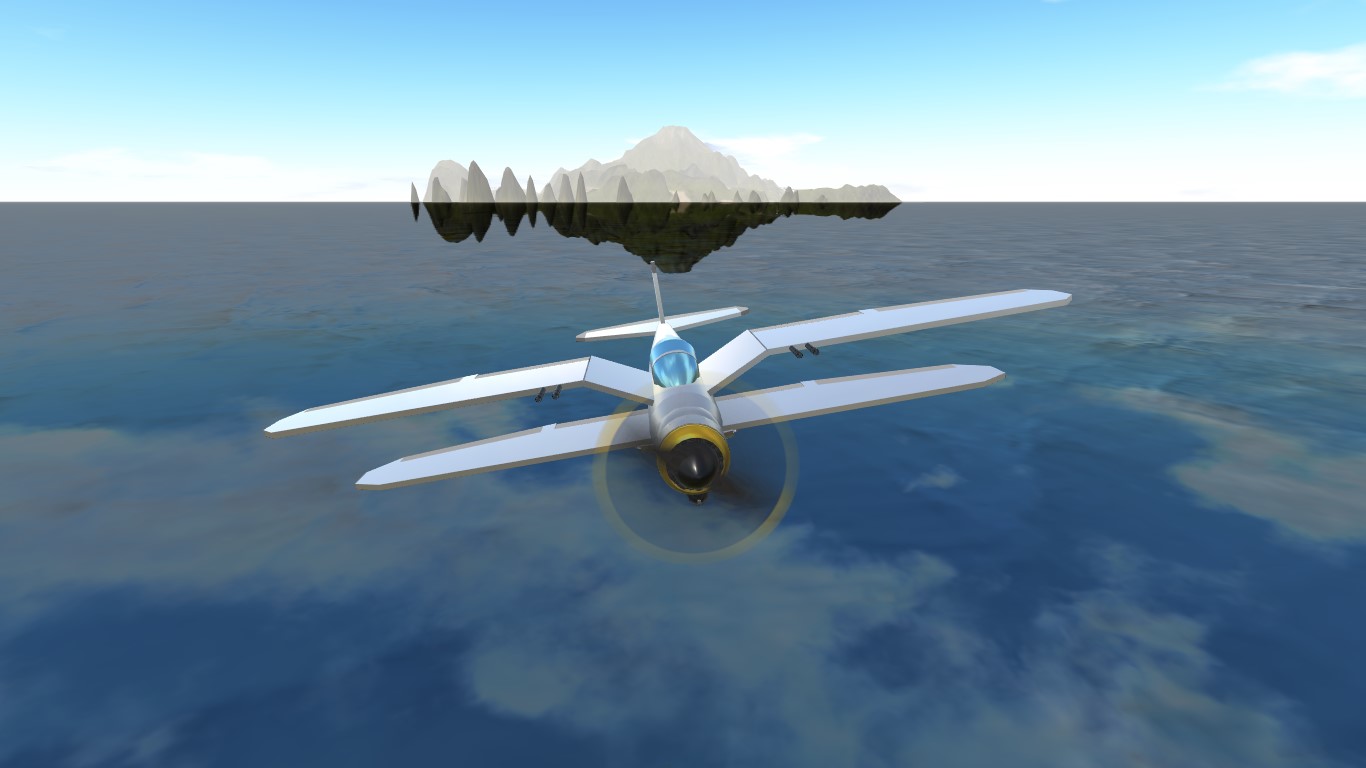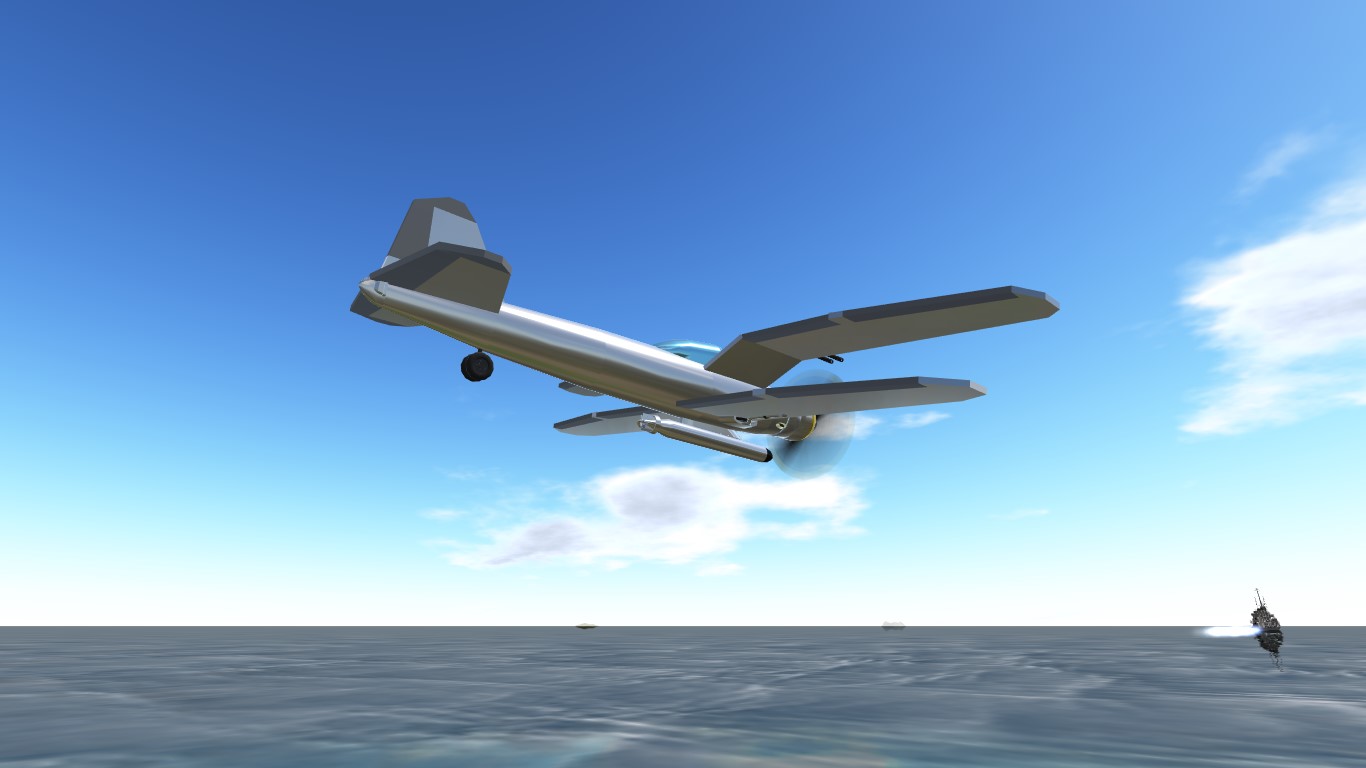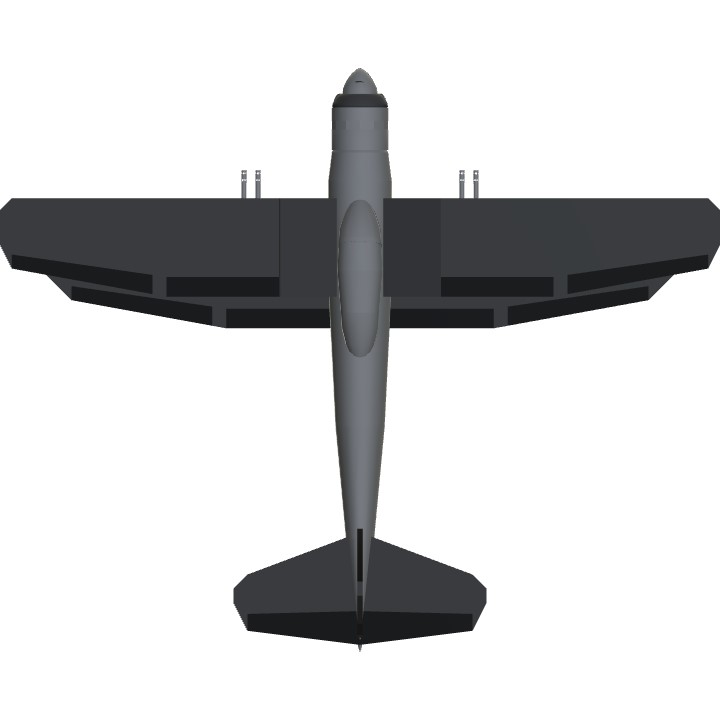CONTROLS:
AG 1: Drag Chute
AG 2: Drop Torpedo
Flaps: Flaps Up/Down (Inverted). Use also for trimming.
Aviation saw rapid development during the interwar period. Nevertheless, in the early to mid 30's, the biplane was still king, though its reign was coming to an end. An attempt at designing an advanced biplane with modern semi-monocoque construction methods, the S.Ca. 21 Canarinho (Little Canary) is one of Socrux's most ubiquitous designs from that era.
With a strong fuselage and one of the most powerful engines available at the time, it is armed quite heavily for a biplane, with four 20mm cannons. Despite its main role as a fighter, it was designed from the outset to have ground attack capability, where this volume of fire was deemed necessary. It performed well, managing to hold its own against early monoplanes, but as it was soon surpassed, it was relegated to purely ground attack roles, finding its main use as a torpedo bomber.
The gull wings located on the sides of the canopy were notably visibility-restricting laterally, but offered great visibility upwards compared with other biplanes, a welcome feature when tracking a target. It was a very agile craft when flying clean, and offered a platform stable enough for low-altitude torpedo launches.
A float-equipped variant was developed for use in coastlines and archipelagos where constructing airfields would be difficult, and a new variant was later fitted with an inverted V engine and named S.Ca. 22 Canarinho-Bis. The floatplane variant is fitted with an enlarged vertical stabilizer to compensate for the lateral instability generated by the draggy floats.
Also check out its younger brother, fitted with a water-cooled engine
Specifications
General Characteristics
- Successors 9 airplane(s) +49 bonus
- Created On Windows
- Wingspan 42.0ft (12.8m)
- Length 34.0ft (10.4m)
- Height 12.3ft (3.8m)
- Empty Weight 3,861lbs (1,751kg)
- Loaded Weight 4,823lbs (2,188kg)
Performance
- Horse Power/Weight Ratio 0.31
- Wing Loading 10.1lbs/ft2 (49.5kg/m2)
- Wing Area 475.7ft2 (44.2m2)
- Drag Points 1845
Parts
- Number of Parts 49
- Control Surfaces 11
- Performance Cost 379








@FlyingHueman yeah that would be perfect. If you build it and upload it at some point could you tag me? I’m curious to see how it would look like
@Mustang51 Perhaps attached to these wing sections between the aleirons and the flaps? I guess that'd work.
@FlyingHueman I think the nose looks good here. I do understand that it’s annoying to work with the set engines for prop aircraft though. As for the struts, I would have them come from the lower wings near the fuselage and go out until 1/2 the way of the top wing. I think that would look pretty good
@BlackhattAircraft This was one of my first birds I felt was worthy of sharing, lel. In fact, I did this one right after I had just learned how to balance things out properly. I've given it a few touch-ups here and there since then, but it's mostly the same.
@LlamaIndustries Thanks man! Hope you enjoy flying it around.
@Mustang51 Yeah, I thought about adding some wing struts last second but couldn't think of a way to get them to look right. Perhaps one day I'll rework this little thing into an "older" version with fixed gear, struts and a serious remodelling on that nose, which I'm not quite happy with.
This looks very cool. What would make it better is some fixed landing gear and struts in between the wings for support. Even without this is really great. It flies fantastic as well!
This looks a lot like a plane that I built a long time ago, I couldn't get it to fly because I was a potato and didn't know how to properly balance lol
Nice job dude!